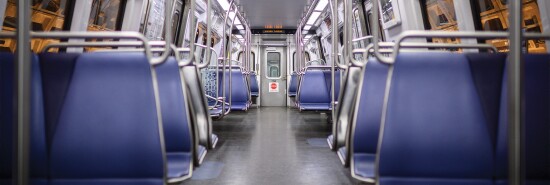
The disappearing transit rail blues
Timothy P. Carney
While federal workers and Google employees ferociously defend their God-given right to do their jobs in their pajamas and never see their bosses in the flesh, almost everyone else actually works at work.
Less than 20% of U.S. workers consider themselves “remote” workers, according to the latest figures from the Census Bureau. Those slippers-wearing laptop warriors overwhelmingly live in and near big cities: Washington and San Francisco have many remote workers, as well as San Jose, California, and Austin, Texas. That is, tech and government are the two industries that haven’t demanded people to come back to work.
This has created some very specific, urban-centered problems, including empty buses and subway cars.
Public transit numbers, after steadily increasing since the end of the lockdowns, look like they may be flatlining at about one-third below pre-pandemic levels. While full-time work-from-home is nowhere near universal, work and commuting habits have changed enough to make a big dent in transit systems.
First, there are the tech and government workers who never or almost never come in anymore. Even if they’re a small proportion of the workforce, their absence is felt on trains and buses.
Then there are the Tuesday-through-Thursday commuters. You may have noticed the difference both on highways and transit: A lot of people are working from home on Monday and Friday, and employers seem OK with this continuing.
The driving converts comprise yet another group leaving empty seats. In 2020 and much of 2021, the roads of America’s cities were largely empty. Washington halted all parking enforcement, meaning that street parking in the district was free. People who had never considered driving (like myself) became converts to audiobooks and not having to walk 10 blocks in a downpour or a summer swelter.
Then there’s the whole crime thing. New York, Washington, Boston, and other cities have seen crime waves on subways and buses, driving away potential riders.
This all adds up to a big problem. Transit benefits from higher ridership and suffers from lower ridership. Riders pay a large part of these systems’ costs, many of which are fixed costs that don’t go down with lower ridership. A decline in riders means you need to shift more of the burden to taxpayers, raise fares, or reduce service.
This triggers a death spiral as fewer riders mean more crimes and reduced schedules mean fewer people can rely on the system.
And unlike in past decades, we cannot expect population growth to help since the working-age population had flatlined before COVID-19 thanks to the baby bust.
Some cities will manage their transit declines better than others, but the trend for the next generation, at least, will be the steady death of public transit.
